Storytelling for Comics: Explore Action and Perspective
Course final project
A course by André Lima Araújo , Comic Book Creator
Joined June 2021
About the final project for: Storytelling for Comics: Explore Action and Perspective
Storytelling for Comics: Explore Action and Perspective
“Congratulations! You have reached the end of this Domestika course. Thanks for enrolling and I hope you've enjoyed delving into comics with me. Before saying goodbye, I would like to clarify my expectations for your final project. You can do one of two things. Either, use the storyline that I shared. Clearly, what I did is an excerpt only. Your task is to extrapolate what happens before and after. Create more layouts, up to a total of 20 pages. Or even better, apply all that you have learned in this course to develop your own story. Create a script, layouts, and final pages. This way, you can familiarize yourself with all the different angles of crafting visual narratives. Start with something small (5-12 pages) and build up from there. Now that you have the task clear in mind, here is the step-by-step process to complete it.
- First, plan your story. Write a skeleton for your narrative with all the notes and details that you want to include. Compile it into one file and develop until you have a beginning, middle, and end.
- From your plan, write a script. Use the basic formatting of dividing things into pages and then panels. As you progress through this stage, you may find that your pages are too crowded. So, move things to the next page or simplify your sequences.
- Once you have completed your script, draw the layouts. In this step, it is important to ensure that everything ties together in terms of storytelling. The flow must work well and move the reader naturally across the page. If it doesn’t, change the script. You can add panels, remove panels, make changes to the sequences. All that you need to make sure of is that your narrative is strong.

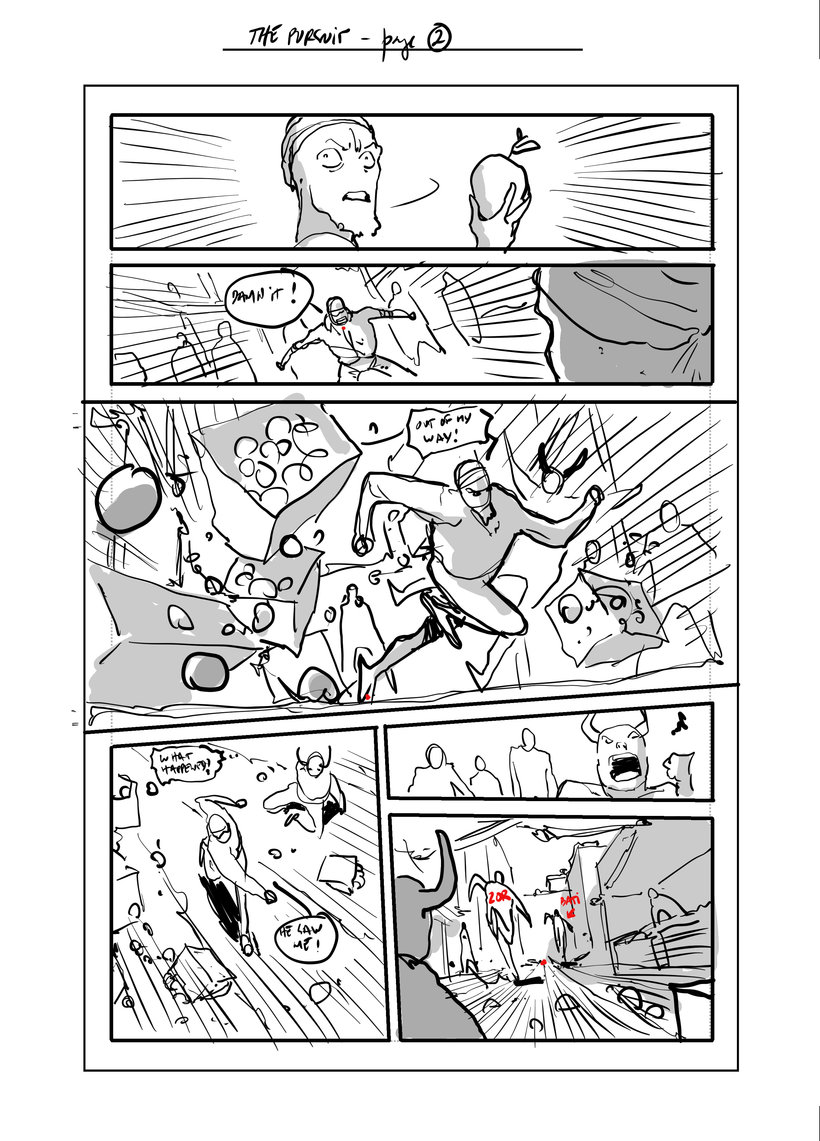
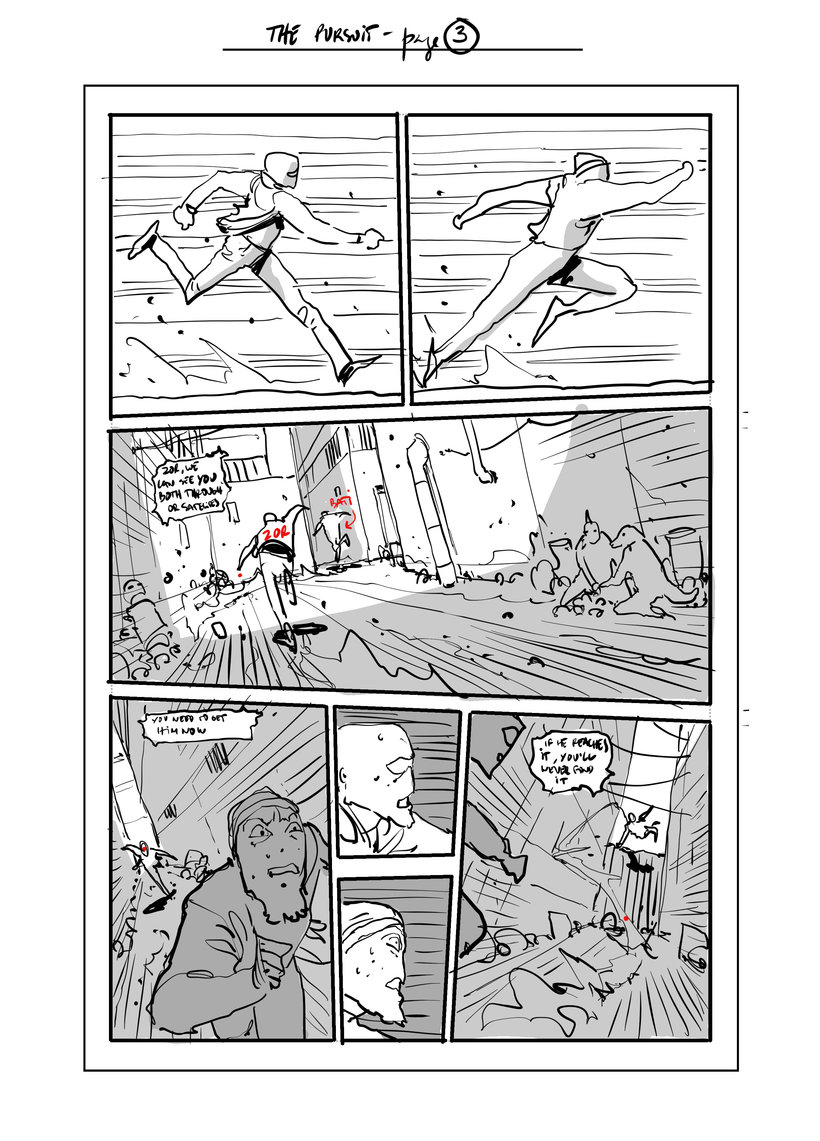
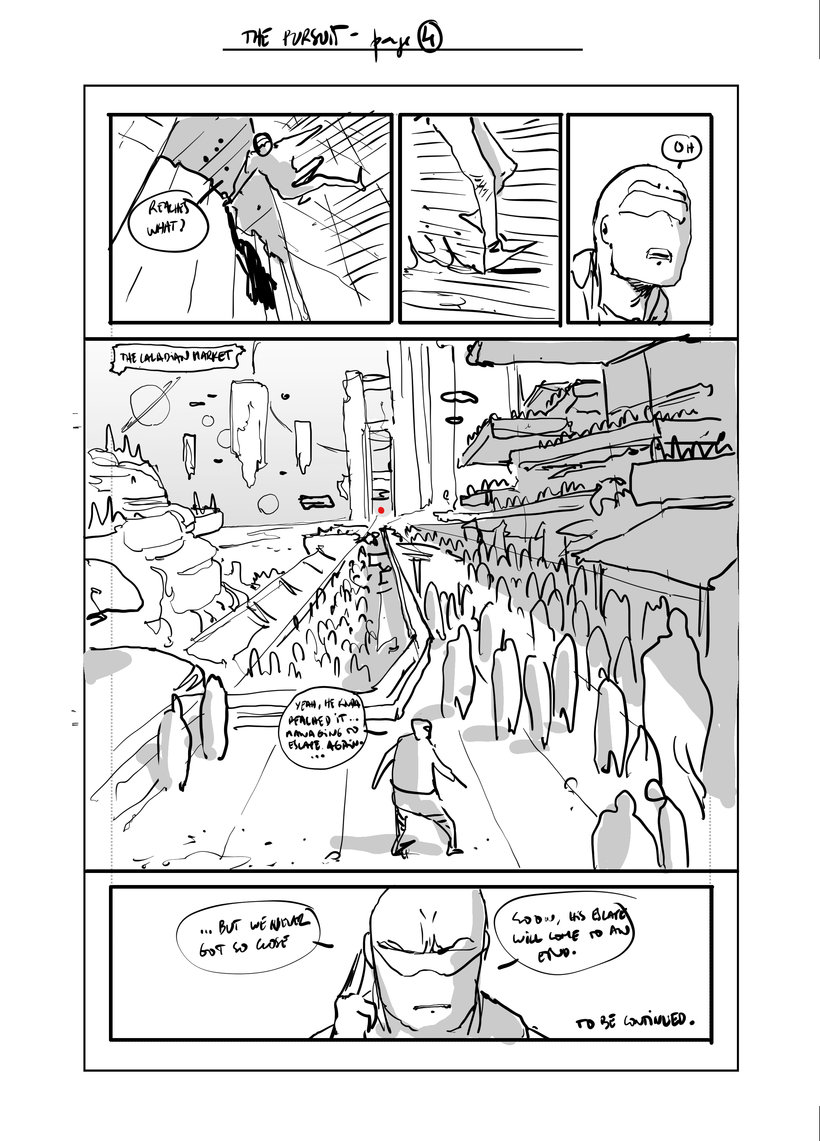
- With the layouts established move to the pencils. I recommend penciling a batch of pages in a row before inking. It helps to not have your brain jumping back and forth between disciplines. Establish good composition, anatomy, and perspective. Detail every element.
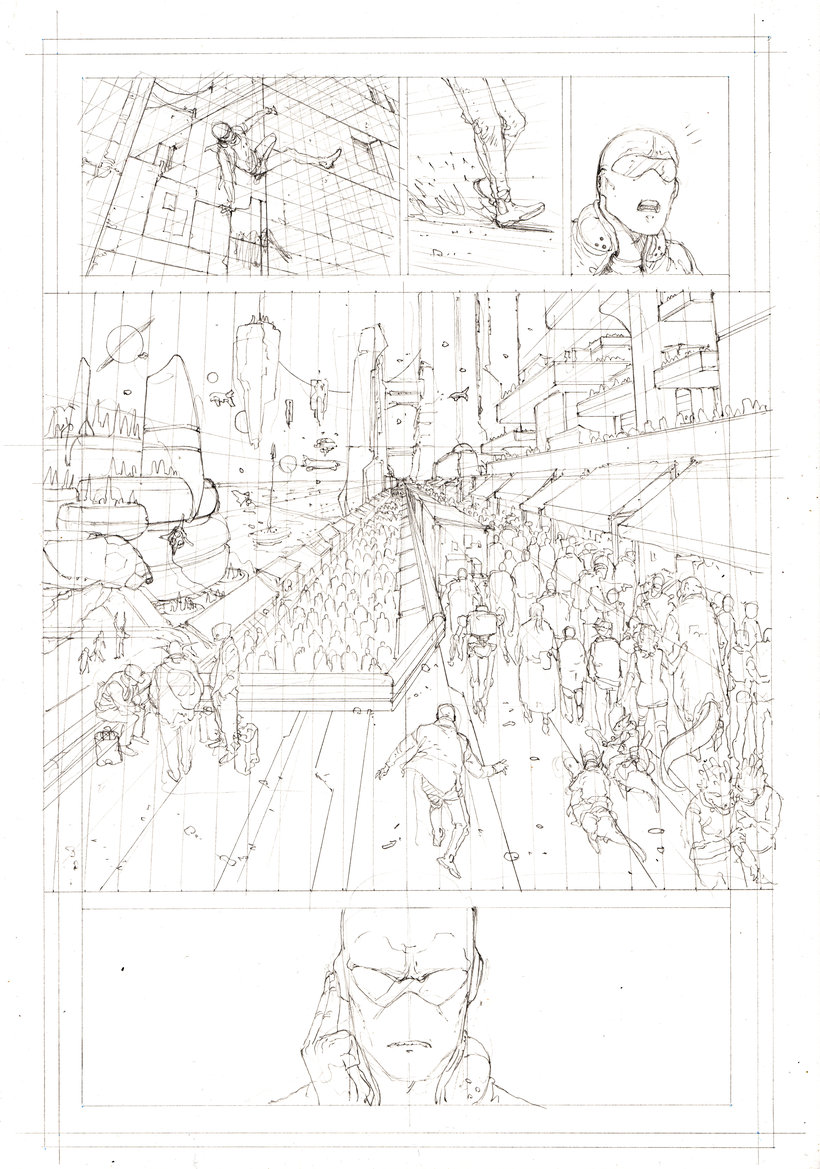
- Finally, it's time to move on to the inking stage. The moment at which you drop your pencils and pick up ink will vary from person to person. Do it when you feel comfortable with what you have. This is the stage to add the line weight variation, the textures, the black spots—all the little techniques that will help your storytelling shine.
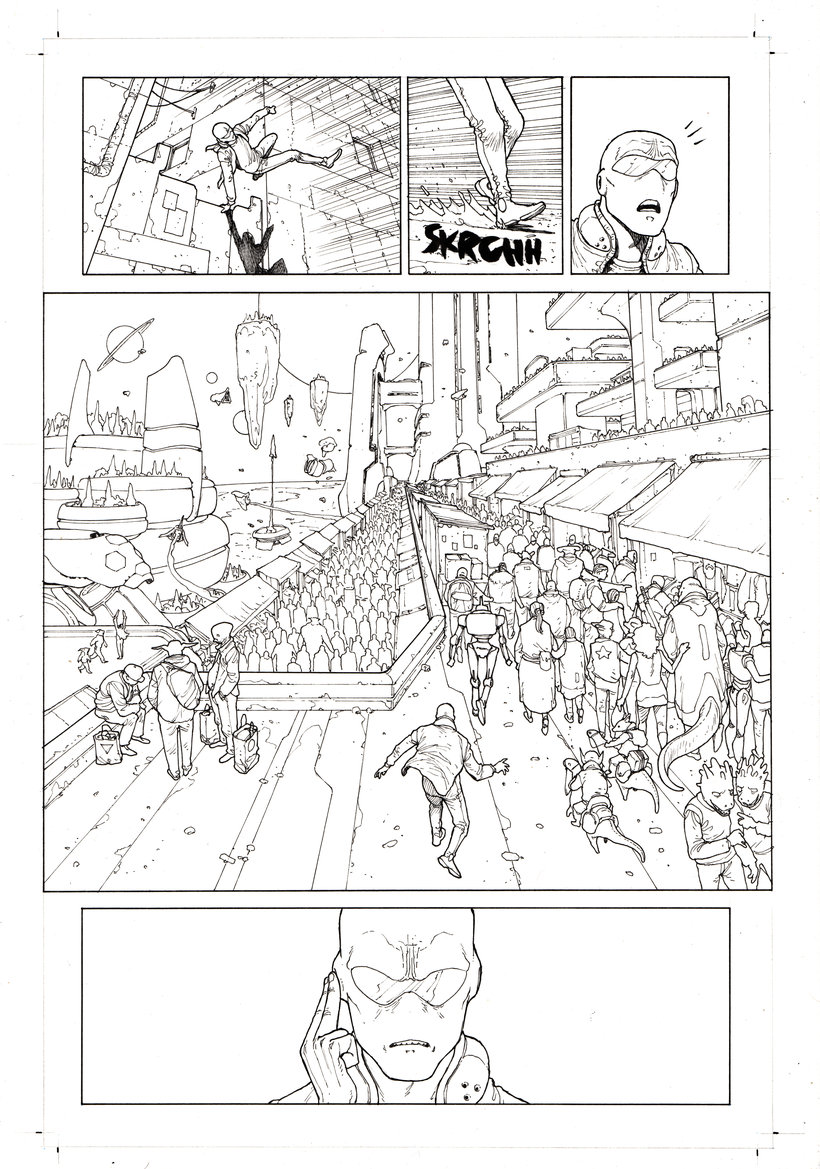
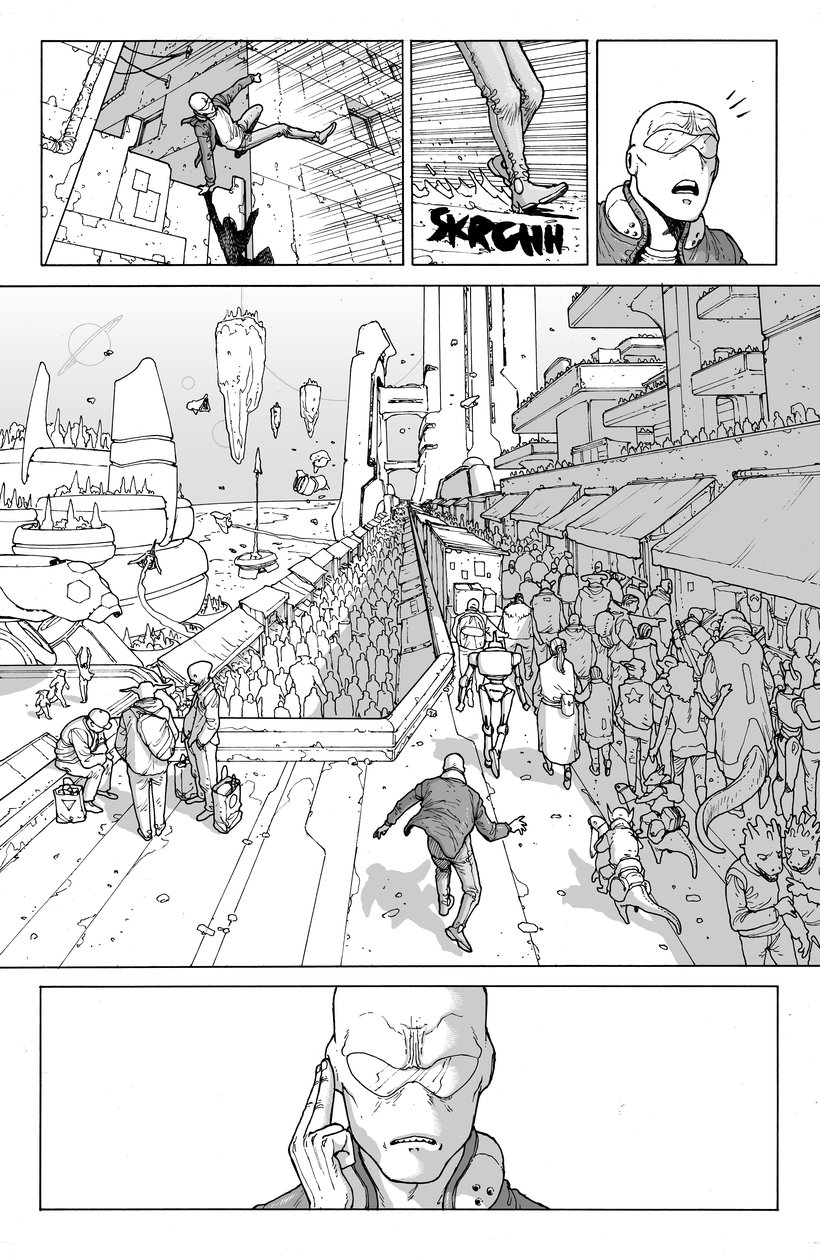
- Storytelling is king. It should guide all of your options.
- Vary your camera angles and panel crop to show different perspectives and zooms, like full-body, heads only, etc.
- Pay attention to your panel and page transitions. Make sure your narrative is clear and people can follow it without getting lost. Establish your characters, places, and objects well, and their relationship to each other.
- Create interesting compositions. Be it an action scene or a quiet scene, make sure there’s enough to keep the reader interested. Integrate balloons into your composition. Draw them onto your layouts.
- My final advice: Start something and finish it.
Partial transcription of the video
“Hi, you reached the end of the course. Thanks for coming along. Before I say goodbye, let me give you some last tips. Despite the apparent complexity of it all, Take one step at a time. you might feel like progress is slow. but a steady flow of work is an unstoppable force. Like water into stone. Remember, Try out different materials until you find out what suits you better. My techniques work great for me, but maybe not for you. So pick them apart until you find a method that suits you. Lastly, the big three. Be persistent. and put yourself out there. Second. Never miss a deadline. And thi...”
This transcript is automatically generated, so it may contain mistakes.
Course summary for: Storytelling for Comics: Explore Action and Perspective
-
Category
Illustration -
Software
Clip Studio Paint -
Areas
Comic, Digital Drawing, Drawing, Ink Illustration, Pencil Drawing, Storyboard, Storytelling

André Lima Araújo
A course by André Lima Araújo
André Lima Araújo is a comic book creator from Portugal. Growing up, he loved comics and was always creating stories and characters. He went on to architecture at the University of Minho and, after graduating, worked as an architect and illustrator before deciding to pursue his passion for comic books as a career.
Since then, André has written, drawn, and created original books including Man Plus, and worked with publishers like DC Comics, and Netflix. He has also worked for Marvel Comics on titles such as Fantastic Four, Avengers AI, Spider-Verse, Inhumans, Spidey, and Black Panther among others.
- 100% positive reviews (107)
- 5,320 students
- 18 lessons (3h 46m)
- 20 additional resources (10 files)
- Online and at your own pace
- Available on the app
- Audio: English, Spanish, French, Italian, Portuguese
- English · Spanish · Portuguese · German · French · Italian · Polish · Dutch
- Level: Beginner
- Unlimited access forever

